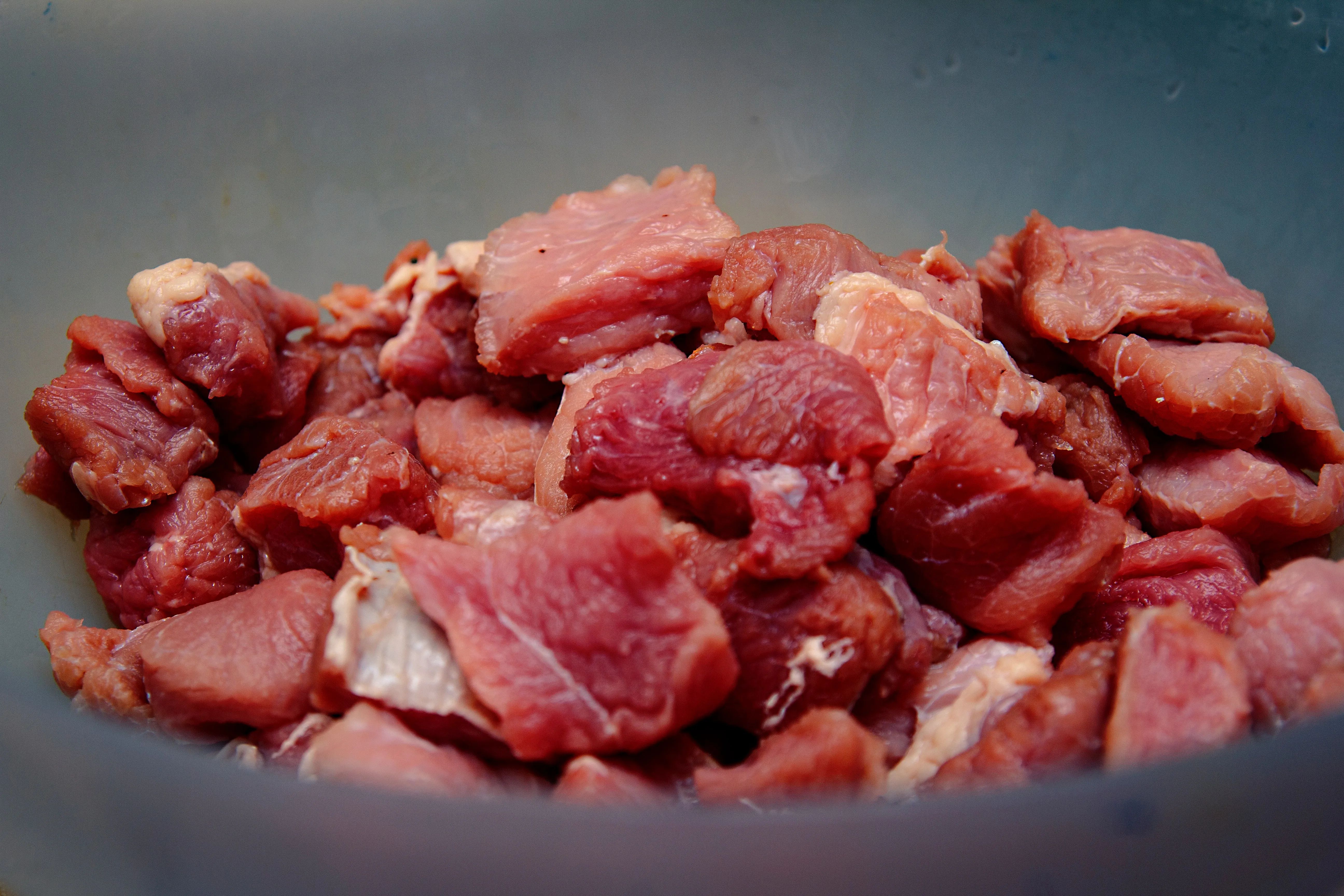Fasting Made Easy: 10 Practical Tips to Maximize Your Results
Introduction

Intermittent fasting has gained popularity as an effective approach to weight loss and overall health improvement. With its flexible eating window, intermittent fasting offers a practical solution for those looking to shed pounds and optimize their well-being. This method involves cycling between periods of fasting and eating, allowing the body to tap into its fat stores for energy. By restricting the time frame in which food is consumed, individuals can naturally reduce their calorie intake and promote weight loss. In this article, we will explore the various benefits of intermittent fasting and provide practical tips to help you maximize your results.
Why fasting is beneficial for your health

Fasting, particularly intermittent fasting, has been recognized for its numerous health benefits. One of the main advantages of intermittent fasting is its effectiveness in promoting weight loss. By limiting the eating window, individuals are able to consume fewer calories, which can lead to a calorie deficit and ultimately result in weight loss. Additionally, intermittent fasting has been linked to improved metabolic health, increased insulin sensitivity, and reduced inflammation. It may also have positive effects on brain health and longevity. Incorporating intermittent fasting into your routine can be a powerful tool for achieving your health and weight loss goals.
Different types of fasting

Intermittent fasting is a popular type of fasting that involves cycling between periods of eating and fasting. This approach typically involves fasting for a certain number of hours each day, known as the fasting window, and consuming all meals within a specific eating window. One common method is the 16/8 method, where individuals fast for 16 hours and eat within an 8-hour window. Intermittent fasting has gained popularity due to its potential benefits for weight loss and improved metabolic health. By limiting the eating window, individuals may naturally consume fewer calories and promote weight loss. It's important to find the eating window that works best for you and aligns with your lifestyle and goals.
Prepare Yourself for Fasting

Preparing yourself for fasting is an essential step to ensure successful results. Before starting any fasting regimen, it is crucial to consult with a healthcare professional to ensure that it is suitable for your individual health needs. Setting realistic goals for fasting, such as aiming for a specific weight loss target or reducing the duration of your eating window, can help keep you motivated and focused. By understanding the benefits of intermittent fasting, such as improved weight loss and metabolic health, you can approach your fasting journey with confidence and maximize your results.
Consulting with a healthcare professional

Consulting with a healthcare professional is an important step before embarking on any fasting journey, especially when it comes to intermittent fasting. These professionals can provide valuable guidance and ensure that fasting is safe and suitable for an individual's specific health needs. They can assess factors such as medical history, current medications, and any underlying conditions to determine the best approach to fasting. By seeking their expertise, individuals can maximize the benefits of intermittent fasting, such as weight loss and improved overall health, while minimizing the risks associated with prolonged periods of fasting or choosing an inappropriate eating window.
Setting realistic goals for fasting

Setting realistic goals for fasting is crucial to ensure success and avoid disappointment. When embarking on an intermittent fasting journey, it is important to have clear objectives in mind. Whether it's weight loss or improving overall health, setting achievable goals will help keep you motivated.
When setting goals for intermittent fasting, consider factors such as your current eating habits, lifestyle, and desired outcomes. Start by determining your ideal eating window and gradually adjust it based on your comfort level. Remember that intermittent fasting is not a quick fix solution for weight loss, but rather a sustainable approach to healthy living.
By setting realistic goals, such as aiming to lose a certain amount of weight within a specific timeframe or achieving a certain level of consistency in your fasting routine, you can stay focused and track your progress effectively. Remember to be patient with yourself and celebrate each milestone along the way.
Start with Intermittent Fasting

To maximize your fasting results, it's recommended to start with intermittent fasting. Intermittent fasting is an eating pattern that involves alternating between periods of fasting and eating within a designated window of time. This approach has gained popularity due to its numerous health benefits, including weight loss. By restricting your eating window, you can naturally reduce your caloric intake and promote fat burning. The flexibility of intermittent fasting allows you to choose a fasting schedule that works best for you, whether it's a 16:8 method or alternate day fasting. Experimenting with different fasting windows can help you find the most effective approach for your weight loss goals.
Understanding intermittent fasting

Intermittent fasting is a popular eating pattern that involves cycling between periods of fasting and eating. During the fasting period, individuals abstain from consuming calories, while the eating window allows for regular meals. This approach to eating has gained attention for its potential benefits, including weight loss and improved metabolic health. By restricting the time frame in which one consumes food, intermittent fasting can help create a calorie deficit, leading to weight loss. It also promotes increased fat burning and improved insulin sensitivity. Understanding and implementing intermittent fasting can be an effective strategy for those looking to lose weight and improve their overall health.
Choosing the right fasting window

Choosing the right fasting window is crucial for maximizing the benefits of intermittent fasting, particularly when it comes to weight loss. The eating window, or the period of time in which you consume your meals, plays a significant role in regulating your body's metabolism and promoting fat burning. It is recommended to start with a fasting window that is manageable for you, such as 16:8 (fasting for 16 hours and eating within an 8-hour window). As you become more comfortable, you can gradually increase the fasting duration. This approach allows your body to adapt and optimize its fat-burning potential, resulting in successful weight loss.
Stay Hydrated and Nourished

During intermittent fasting, it is crucial to stay hydrated and nourished. Drinking an adequate amount of water is essential to prevent dehydration and support overall bodily functions. Water can also help curb hunger cravings during the fasting period. Additionally, incorporating nutrition-rich foods during your eating window can provide the necessary nutrients for your body while promoting weight loss. Opt for whole foods such as fruits, vegetables, lean proteins, and healthy fats to ensure you are nourishing your body properly. By staying hydrated and making nutritious food choices, you can maximize the benefits of intermittent fasting and achieve your weight loss goals.
Importance of water during fasting

Water plays a crucial role in supporting your body during intermittent fasting. Staying hydrated is essential for maintaining optimal bodily functions and supporting weight loss goals. During the fasting period, drinking water helps to keep you feeling full and satisfied, reducing the temptation to break your fast prematurely. Additionally, water aids in digestion and helps to flush out toxins from your system. It also helps to regulate body temperature and keeps your cells functioning properly. Therefore, make sure to drink an adequate amount of water during your eating window to maximize the benefits of intermittent fasting and support your weight loss journey.
Nutrition-rich foods during non-fasting periods

During non-fasting periods in intermittent fasting, it is essential to focus on consuming nutrition-rich foods to support overall health and maximize weight loss goals. Incorporating nutrient-dense foods such as fruits, vegetables, lean proteins, whole grains, and healthy fats can provide essential vitamins, minerals, and antioxidants. These foods not only nourish the body but also promote satiety and help regulate blood sugar levels. Avoiding processed and high-sugar foods is crucial to maintain a balanced eating window and prevent spikes in insulin levels. By prioritizing nutrition-rich foods during non-fasting periods, individuals can optimize their results and enhance the benefits of intermittent fasting for weight loss.
Listen to Your Body

When practicing intermittent fasting, it is crucial to listen to your body's cues and signals. Paying attention to these signals can help you determine when you are truly hungry or full, preventing overeating and promoting a healthy eating pattern. Recognizing hunger and satiety cues is especially important during the fasting period, as it can be tempting to consume more food than necessary once the eating window opens. By being mindful of your body's needs and responding appropriately, you can optimize the benefits of intermittent fasting, such as weight loss and improved overall health.
Recognizing hunger and satiety cues

Recognizing hunger and satiety cues is crucial when practicing intermittent fasting for weight loss. During your fasting period, it's important to listen to your body and determine whether you are truly hungry or just experiencing cravings. Pay attention to physical signs such as stomach growling and feelings of emptiness. Additionally, assess your emotional state and stress levels, as these can sometimes lead to false hunger cues. On the other hand, when it's time to break your fast during your eating window, be mindful of your body's signals of fullness and satisfaction. By being in tune with your hunger and satiety cues, you can optimize your eating patterns and achieve successful results with intermittent fasting.
Avoiding overeating after fasting

Avoiding overeating after fasting is crucial to maximize the benefits of intermittent fasting, especially when it comes to weight loss. After a fasting period, it can be tempting to consume large quantities of food due to hunger. However, it is important to resist this urge and practice portion control. One effective strategy is to break your fast with a balanced meal that includes protein, healthy fats, and fiber. This will help you feel satisfied and prevent excessive calorie intake. Additionally, paying attention to your body's hunger and satiety cues can help you avoid overeating during your eating window and maintain a healthy balance.
Optimize Your Meal Choices

When practicing intermittent fasting, it's important to optimize your meal choices during your eating window to maximize the benefits of fasting and support your weight loss goals. Focus on nutrient-dense foods that provide essential vitamins, minerals, and fiber. Choose lean proteins, whole grains, fruits, and vegetables to fuel your body properly. Avoid processed and high-sugar foods that can spike your blood sugar levels and lead to cravings. By making mindful and nutritious meal choices, you can enhance the effectiveness of intermittent fasting and promote healthy weight loss within your eating window.
Focus on nutrient-dense foods

When practicing intermittent fasting for weight loss, it is crucial to focus on consuming nutrient-dense foods during your eating window. Nutrient-dense foods are rich in vitamins, minerals, and other essential nutrients, providing maximum health benefits. Incorporating foods such as fruits, vegetables, lean proteins, whole grains, and healthy fats can help support your body's nutritional needs while promoting weight loss. These foods not only provide satiety and energy but also contribute to overall well-being. By prioritizing nutrient-dense choices, you can optimize the benefits of intermittent fasting and achieve your weight loss goals more effectively.
Avoiding processed and high-sugar foods

To maximize the benefits of intermittent fasting and support your weight loss goals, it is crucial to avoid processed and high-sugar foods. These types of foods can disrupt your eating window and hinder your progress. Processed foods are typically high in unhealthy fats, sodium, and added sugars, which can lead to weight gain and inflammation. High-sugar foods, such as sugary drinks and desserts, can cause spikes in blood sugar levels and increase cravings. Instead, focus on consuming nutrient-dense whole foods like fruits, vegetables, lean proteins, and whole grains. By making healthier choices, you can optimize your fasting results and achieve your desired weight loss goals.
Incorporate Physical Activity

Incorporating physical activity into your routine is an essential component of successful intermittent fasting. The benefits of intermittent fasting for weight loss are further enhanced when combined with regular exercise. Engaging in physical activity during your eating window can help accelerate calorie burn and support your weight loss goals. Choose workouts that align with your fitness level and preferences, whether it's cardio, strength training, or a combination of both. By staying active, you'll not only boost your metabolism but also improve your overall health and well-being. Remember to listen to your body and adjust your exercise routine as needed while practicing intermittent fasting.
Benefits of exercise during fasting

Exercise during fasting can provide numerous benefits to individuals practicing intermittent fasting. One of the key advantages is enhanced weight loss. When combined with a restricted eating window, exercise helps create a calorie deficit, leading to increased fat burning and ultimately aiding in weight loss. Additionally, exercise during fasting can improve insulin sensitivity and promote the preservation of muscle mass. It also helps boost metabolism, allowing for more efficient calorie burning throughout the day. Incorporating physical activity into your fasting routine can maximize your results and contribute to overall health and well-being.
Choosing appropriate workouts

When it comes to choosing appropriate workouts while practicing intermittent fasting, it's important to consider your energy levels and the timing of your eating window. Since fasting can temporarily decrease your energy levels, opting for lighter or moderate-intensity exercises may be more suitable. Activities such as yoga, brisk walking, cycling, or strength training with lighter weights can help you maintain muscle mass and burn calories without draining your energy. Remember to listen to your body and adjust your workout intensity accordingly. By incorporating regular physical activity into your fasting routine, you can enhance the benefits of intermittent fasting and support your weight loss goals.
Mindful Eating and Stress Management

Mindful eating and stress management play crucial roles in maximizing the benefits of intermittent fasting and achieving weight loss goals. By practicing mindful eating techniques, individuals can develop a deeper awareness of their hunger and satiety cues, which helps prevent overeating during the eating window. This promotes better portion control and overall healthier eating habits. Additionally, managing stress is essential as it can trigger emotional eating and sabotage weight loss efforts. Incorporating stress management techniques such as deep breathing exercises or meditation can help individuals stay on track with their fasting routine and make more mindful food choices.
Practicing mindful eating techniques

Practicing mindful eating techniques is crucial for maximizing the benefits of intermittent fasting and achieving successful weight loss. By being fully present and conscious of your eating habits during your designated eating window, you can make healthier choices and avoid overeating. Mindful eating involves paying attention to your body's hunger and satiety cues, savoring each bite, and eating slowly. It also means listening to your body's signals of fullness and stopping eating when you feel satisfied. By incorporating mindful eating into your intermittent fasting routine, you can enhance the effectiveness of your weight loss efforts.
Managing stress to avoid emotional eating

To effectively manage stress and avoid emotional eating during intermittent fasting, it is important to incorporate stress management techniques into your routine. Stress can often lead to cravings and impulsive eating, which can hinder your weight loss goals. Implementing strategies such as deep breathing exercises, meditation, or engaging in activities that bring you joy and relaxation can help alleviate stress. Additionally, finding healthy ways to cope with emotions, such as talking to a supportive friend or practicing self-care, can prevent emotional eating during your eating window and contribute to successful weight loss through intermittent fasting.
Monitor Your Progress and Adjust

To ensure successful fasting, it is essential to monitor your progress and make necessary adjustments along the way. Keep track of your weight and body composition changes to gauge the effectiveness of your intermittent fasting routine. This will help you determine if you are achieving your desired goals, such as weight loss or improved overall health. Additionally, pay attention to how your body responds during fasting and non-fasting periods. If you find that your chosen eating window is not working for you, be flexible and make adjustments accordingly. Remember, intermittent fasting is a customizable approach, so adapt it to suit your needs and preferences.
Measuring changes in weight and body composition

When practicing intermittent fasting, it's important to monitor changes in weight and body composition to assess the effectiveness of your fasting routine. Regularly weighing yourself and taking body measurements can provide valuable insights into your progress. Keep in mind that weight loss may not be the sole indicator of success, as other factors such as muscle gain and overall body composition can also impact your results. By tracking your progress, you can make necessary adjustments to your fasting routine and ensure that you are on the right path to achieving your weight loss goals during your eating window.
Making necessary adjustments to your fasting routine

Once you have established a fasting routine, it is essential to monitor your progress and make any necessary adjustments along the way. This will help you maximize your results and ensure that you are getting the most out of your fasting journey. One way to do this is by measuring changes in your weight and body composition regularly. This will allow you to track your progress and make adjustments as needed. Additionally, pay attention to how your body responds to different fasting protocols. If you find that a particular eating window is not working for you, don't be afraid to experiment and try different approaches. Remember, the key to successful intermittent fasting is finding what works best for your body and lifestyle.
Conclusion

In conclusion, incorporating intermittent fasting into your lifestyle can have numerous benefits for your health and weight loss goals. By consulting with a healthcare professional and setting realistic goals, you can prepare yourself for a successful fasting journey. Starting with intermittent fasting allows you to ease into the process and choose the right eating window for you. Staying hydrated and nourished is crucial, as is listening to your body's hunger and satiety cues. Optimize your meal choices by focusing on nutrient-dense foods and avoiding processed and high-sugar options. Incorporating physical activity and practicing mindful eating techniques can further enhance your results. By monitoring your progress and making necessary adjustments, you can tailor your fasting routine to suit your individual needs. Overall, intermittent fasting offers a practical and effective approach to weight loss and improved health.
Summary of the 10 practical tips for successful fasting
Summary of the 10 practical tips for successful fasting:
Intermittent fasting is a beneficial approach to improve health and aid in weight loss. To maximize your results, it is important to prepare yourself mentally and physically. Consulting with a healthcare professional and setting realistic goals is essential. Starting with intermittent fasting, choosing the right eating window, staying hydrated, and consuming nutrition-rich foods during non-fasting periods are crucial. Listening to your body's hunger and satiety cues, optimizing meal choices, incorporating physical activity, practicing mindful eating, and managing stress are key factors. Monitoring progress and making necessary adjustments will ensure successful fasting. Embracing these tips will lead to a positive experience with intermittent fasting and its numerous benefits.
Final thoughts on the benefits of fasting
Fasting can be an effective tool for improving your health and achieving your weight loss goals. Intermittent fasting, in particular, has gained popularity due to its numerous benefits. By restricting your eating window and allowing your body to enter a fasting state, you can promote weight loss, increase insulin sensitivity, and improve overall metabolic health. Incorporating intermittent fasting into your routine can also help you develop a healthier relationship with food and become more mindful of your eating habits. Remember to consult with a healthcare professional and listen to your body's cues to ensure a safe and successful fasting experience.
